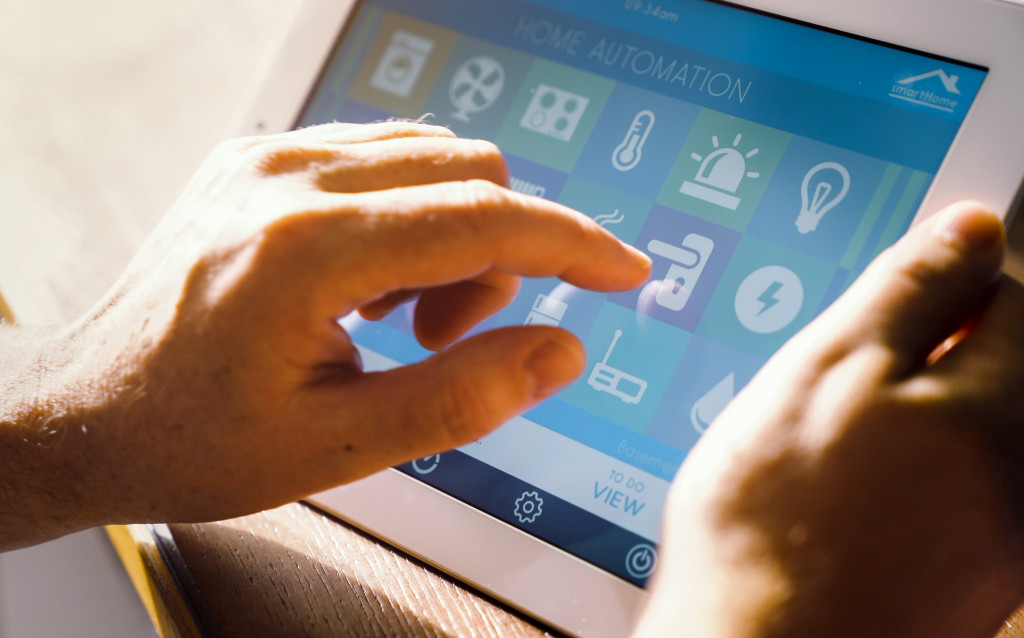What is a Smart Home?
A smart home is a residence that incorporates advanced technology to enable the automation and remote control of various systems, appliances, and features within the living space. It integrates various connected devices and intelligent systems designed to enhance comfort, convenience, energy efficiency, and security.
The core concept of a smart home revolves around the idea of home automation, where various aspects of the living environment can be controlled and monitored through a centralized system or individual smart devices. This automation allows homeowners to streamline daily tasks, optimize energy usage, and enjoy a more convenient and personalized living experience.
Smart home devices typically fall into several categories, such as lighting control, thermostat management, home security, entertainment systems, and appliance integration. These devices can be controlled through voice commands, smartphone apps, or centralized home automation hubs, allowing users to manage various aspects of their home with ease.
Some examples of common smart home devices include:
- Smart speakers and voice assistants (e.g., Amazon Alexa, Google Assistant)
- Smart lighting systems and bulbs (e.g., Philips Hue, LIFX)
- Smart thermostats (e.g., Nest, Ecobee)
- Smart security cameras and door locks (e.g., Ring, Arlo, August)
- Smart appliances (e.g., refrigerators, washers, dryers)
- Smart entertainment systems (e.g., smart TVs, media players)
The benefits of a smart home include increased convenience, energy efficiency, enhanced security, and remote access and control. By automating various tasks and systems, homeowners can save time, reduce energy consumption, and enjoy a more comfortable and personalized living environment tailored to their preferences and needs.
Table of Contents
Smart Speakers and Voice Assistants
Smart speakers and voice assistants have become essential gadgets for modern smart homes. These devices allow you to control various aspects of your home using just your voice, making it incredibly convenient and hands-free. The most popular voice assistants on the market include Amazon’s Alexa, Google Assistant, and Apple’s Siri.
With Alexa, you can control compatible smart home devices, play music, set reminders, and even order products from Amazon simply by giving voice commands. The Echo range of smart speakers from Amazon offers excellent sound quality and seamless integration with Alexa.
Google Assistant, available on Google Home speakers and many Android devices, provides similar voice control capabilities. It excels at answering queries, setting reminders, and controlling smart home devices from various brands thanks to its powerful search capabilities and integration with Google’s ecosystem.
Apple’s Siri, primarily found on iPhones, iPads, and HomePod speakers, offers voice control for Apple’s HomeKit-enabled smart home devices. While Siri may not be as advanced as Alexa or Google Assistant in some areas, it provides a seamless experience for those deeply invested in Apple’s ecosystem.
These voice assistants can control a wide range of smart home devices, including lights, thermostats, security systems, and even kitchen appliances. With just a simple voice command, you can adjust the temperature, turn on the lights, or check the status of your home security system, making your home more efficient and convenient.
Smart Lighting and Switches
One of the most popular and accessible smart home upgrades is intelligent lighting and switches. Smart bulbs, light strips, dimmers, and motion sensors offer a range of benefits, from energy savings to convenience and enhanced security.
Smart Bulbs: Smart LED bulbs are a simple way to start your smart home journey. These bulbs can be controlled remotely via a smartphone app or voice commands, allowing you to turn lights on and off, adjust brightness levels, and even change colors. Popular options include Philips Hue, LIFX, and TP-Link Kasa bulbs, which integrate with various smart home platforms.
Light Strips: Smart light strips are versatile and can add ambient lighting to any room. These flexible LED strips can be placed under cabinets, behind TVs, or along baseboards, creating a customizable and immersive lighting experience. Many light strips offer a wide range of colors and the ability to sync with music or other smart home devices.
Dimmers and Switches: Replacing traditional light switches with smart dimmers and switches is another way to control your lighting. These devices allow you to adjust the brightness of your lights, create schedules, and even set scenes for different occasions or moods. Brands like Lutron, Leviton, and TP-Link offer a variety of smart dimmers and switches that can be integrated with your smart home system.
Motion Sensors: Smart motion sensors can automatically turn lights on or off based on detected movement, saving energy and providing added security. These sensors can be placed in hallways, bathrooms, or outdoor areas, ensuring lights are only on when needed. Some motion sensors also offer additional features like night vision and integration with security cameras.
Energy-Saving Features: Many smart lighting products prioritize energy efficiency, helping you reduce your electricity consumption and lower your utility bills. Smart bulbs and switches often have built-in timers, schedules, and occupancy sensors that automatically turn off lights when a room is vacant. Some products even provide real-time energy monitoring and usage reports, allowing you to optimize your lighting for maximum efficiency.
With smart lighting and switches, you can enjoy the convenience of remote control, customizable lighting scenes, and energy-saving capabilities, all while enhancing the ambiance and functionality of your home.
Smart Thermostats and HVAC Control
Smart thermostats are one of the most popular and impactful smart home devices for improving energy efficiency and comfort. These advanced thermostats allow you to precisely control the temperature in your home, either through a user-friendly app or voice commands. Many models offer programmable scheduling, so you can set different temperatures for different times of day or when you’re away from home.
With smart thermostats, you can remotely adjust the temperature from anywhere using your smartphone. This not only adds convenience but also helps you save energy by ensuring your HVAC system isn’t working harder than necessary when no one is home. Some thermostats even use occupancy sensors and geofencing to automatically adjust settings based on your presence.
In addition to temperature control, many smart thermostats provide detailed energy usage reports, allowing you to identify patterns and make informed decisions about reducing your energy consumption. They can also integrate with other smart home devices, such as smart lights or security systems, enabling automated routines and scenes for optimal comfort and efficiency.
Top smart thermostat brands like Nest, Ecobee, and Honeywell offer advanced features like smart learning, which adapts to your temperature preferences over time, and smart sensors that detect humidity levels and adjust accordingly. With their sleek designs and intuitive interfaces, smart thermostats make it easy to manage your home’s heating and cooling systems while saving money on energy bills.
Smart Home Security Systems
Smart home security systems have revolutionized the way we protect our homes and families. These advanced systems integrate various components, such as smart locks, security cameras, motion detectors, and mobile apps, to provide comprehensive monitoring and control over your home’s security.
Smart Locks: Forget about fumbling with keys or worrying about lost or stolen ones. Smart locks allow you to unlock your doors using your smartphone, a fingerprint, or a unique access code. Many smart locks also offer remote access, enabling you to grant temporary entry to guests or service providers while you’re away. Some even integrate with security cameras, providing visual verification before unlocking.
Security Cameras: Strategically placed security cameras can keep an eye on every corner of your home, both inside and out. With high-definition video, night vision, and motion detection capabilities, these cameras can capture and record any suspicious activity. Many smart security cameras also offer two-way audio, allowing you to communicate with visitors or potential intruders remotely.
Motion Detectors: Motion detectors are essential components of a smart home security system. Strategically placed throughout your home, these sensors can detect movement and trigger alerts, cameras, or other automated responses. Advanced motion detectors can even distinguish between humans, pets, and other objects, reducing false alarms.
Mobile Apps: The true power of a smart home security system lies in its integration with mobile apps. These apps provide real-time alerts, live video feeds, and remote control over various components of the system. Whether you’re at work, running errands, or on vacation, you can monitor and manage your home’s security from the palm of your hand.
By combining these smart security components, you can create a comprehensive and customizable home security solution tailored to your specific needs. With real-time monitoring, automated alerts, and remote control capabilities, you can enjoy peace of mind knowing that your home and loved ones are protected, even when you’re away.
Smart Kitchen Appliances
The kitchen is the heart of the modern home, and smart appliances are revolutionizing how we cook, store food, and manage our culinary tasks. From intelligent refrigerators that track expiration dates and suggest recipes based on their contents to ovens that can be controlled remotely via a smartphone app, the smart kitchen is a marvel of convenience and efficiency.
Smart refrigerators are leading the charge, offering features like touchscreen displays, internal cameras to monitor inventory, and the ability to create shopping lists based on what’s running low. Some models even have built-in speakers and can stream music or podcasts while you’re whipping up a meal. Integrations with popular meal planning apps and voice assistants like Alexa or Google Assistant make it easier than ever to plan your weekly menus and ensure you have all the necessary ingredients on hand.
Smart ovens are another game-changer, allowing you to preheat, adjust temperatures, and monitor cooking progress from your smartphone. Many models come with preset cooking programs for various dishes, taking the guesswork out of achieving perfect results. Some even feature built-in cameras, so you can check on your dish’s progress without opening the oven door and losing heat.
Coffee aficionados will appreciate the convenience of smart coffee makers, which can be programmed to brew your perfect cup at a specific time or triggered remotely with a voice command or app. Some models even allow you to adjust the brew strength, temperature, and other settings from your smartphone, ensuring your coffee is tailored to your exact preferences.
Beyond these individual appliances, smart home platforms like Amazon’s Alexa, Google Home, and Apple’s HomeKit allow seamless integration and control of all your smart kitchen devices. With a simple voice command or tap on your smartphone, you can adjust the oven temperature, check what’s in your fridge, or start brewing a fresh pot of coffee – all while multitasking or even when you’re away from home.
As the smart home revolution continues to gain momentum, the kitchen is poised to become even more efficient, convenient, and enjoyable. With the latest gadgets and integrations, meal planning, cooking, and even cleaning up can become effortless tasks, freeing up more time for you to savor the flavors and company of loved ones.
Smart Home Entertainment Systems
The living room is the heart of home entertainment, and smart technology has revolutionized the way we enjoy movies, shows, music, and more. Smart TVs are at the forefront of this transformation, offering seamless integration with streaming services like Netflix, Hulu, and Disney+. With their vibrant displays, advanced picture quality, and built-in smart platforms, these TVs provide an immersive viewing experience right out of the box.
Complementing smart TVs are streaming devices like Roku, Amazon Fire TV, and Apple TV, which bring a world of content to any television. These compact gadgets grant access to a vast library of movies, TV shows, and live channels, making it easy to cut the cord and ditch traditional cable or satellite subscriptions.
For those seeking a cinematic experience at home, smart home theater systems are a game-changer. These systems combine high-quality audio components, such as soundbars, surround sound speakers, and subwoofers, with smart features like voice control and seamless integration with your other smart devices. Whether you’re watching the latest blockbuster or indulging in a classic film, these systems deliver an unparalleled audio-visual experience.
Lastly, multi-room audio setups allow you to enjoy your favorite tunes throughout your entire home. With wireless speakers strategically placed in different rooms, you can stream music from your smartphone, tablet, or voice assistant, creating a harmonious ambiance that follows you from room to room. These systems often integrate with popular music streaming services like Spotify, Apple Music, and Amazon Music, ensuring you have access to an extensive library of songs and playlists.
Smart Home Energy Management
Smart home energy management systems allow homeowners to monitor, control, and optimize their energy usage. These systems typically consist of smart plugs, power meters, and energy monitoring devices that provide real-time data on energy consumption throughout the home.
Smart Plugs: Smart plugs are simple yet effective devices that can be plugged into regular electrical outlets, allowing you to control and schedule the power supply to appliances and electronics. These plugs can be operated remotely through a smartphone app or voice commands, enabling you to turn off devices when not in use, reducing energy waste.
Power Meters: Power meters, also known as energy monitors, are devices that measure and display the electricity consumption of your entire home or specific circuits and appliances. By providing detailed insights into energy usage patterns, power meters help identify areas of high consumption and potential opportunities for savings.
Energy Monitoring Systems: Comprehensive energy monitoring systems combine smart plugs, power meters, and other sensors to provide a complete picture of your home’s energy usage. These systems often include software platforms or mobile apps that analyze the data and offer personalized recommendations for improving energy efficiency.
Renewable Energy Integration: As more homeowners adopt solar panels, wind turbines, or other renewable energy sources, smart home energy management systems can seamlessly integrate with these systems. They can monitor and optimize the use of renewable energy, reducing reliance on the grid and potentially saving money on utility bills.
With smart home energy management solutions, homeowners can gain greater control over their energy consumption, reduce their carbon footprint, and potentially save money on utility bills by identifying and addressing inefficiencies. These systems provide valuable insights and automation capabilities, making it easier to live a more sustainable and energy-efficient lifestyle.
Smart Home Automation Platforms
Smart home automation platforms are the central hubs that allow you to control and integrate various smart home devices from a single interface. These platforms offer a unified system for managing your connected gadgets, enabling seamless communication and automation across different brands and product categories.
One of the most popular smart home automation platforms is Samsung SmartThings. This platform supports a wide range of compatible devices, including smart lights, thermostats, security cameras, and more. With SmartThings, you can create customized routines and automation rules, such as turning off all lights when you leave home or adjusting the thermostat based on your presence.
Apple HomeKit is another prominent platform, designed specifically for Apple users. It allows you to control compatible smart home devices using Siri voice commands or the Home app on your iPhone, iPad, or Apple Watch. HomeKit emphasizes privacy and security, ensuring that your smart home data is encrypted and protected.
Amazon Alexa is a powerful voice assistant that can also serve as a smart home automation platform. With Alexa, you can control compatible devices using voice commands or the Alexa app. Alexa skills allow you to integrate various smart home services and create custom routines, making it a versatile and flexible solution.
These automation platforms offer a range of customization options, allowing you to tailor your smart home experience to your specific needs and preferences. You can create scenes or routines that trigger multiple actions with a single command, such as “Good morning” to turn on lights, adjust the thermostat, and start your coffee maker. Additionally, you can set up automations based on triggers like time of day, location, or sensor data, enabling your smart home to adapt to your daily routines seamlessly.
By integrating multiple smart home devices through a central automation platform, you can unlock the true potential of a connected home. With a unified interface, you can control and monitor your smart gadgets effortlessly, creating a cohesive and efficient living environment tailored to your lifestyle.
Future of Smart Homes
The smart home industry is rapidly evolving, with new technologies and innovations emerging constantly. One of the most exciting developments is the integration of artificial intelligence (AI) into smart home systems. AI-powered virtual assistants like Amazon’s Alexa and Google Assistant are becoming more advanced, able to learn from user behavior and preferences, and provide personalized recommendations and automation.
Another area of growth is the Internet of Things (IoT), where more and more household devices and appliances are becoming connected and controllable via smart home platforms. From smart fridges that can track expiration dates and suggest recipes based on their contents, to smart mirrors that can display weather, news, and schedules, the possibilities are endless.
However, as smart homes become more sophisticated, concerns around privacy and security are also growing. With so many devices connected to the internet and collecting data, there is a risk of hacking and data breaches. Smart home companies will need to prioritize robust security measures and transparent data policies to maintain consumer trust.
Cost and accessibility are also important considerations. While smart home technology is becoming more affordable, it can still be a significant investment for many households. Manufacturers and service providers will need to find ways to make smart home solutions more accessible and inclusive, ensuring that the benefits of these technologies are not limited to only the affluent.
Overall, the future of smart homes looks promising, with exciting new technologies on the horizon. But it will be crucial to address the challenges of privacy, security, and accessibility to ensure that smart homes truly enhance our lives and make them more efficient, convenient, and sustainable.



